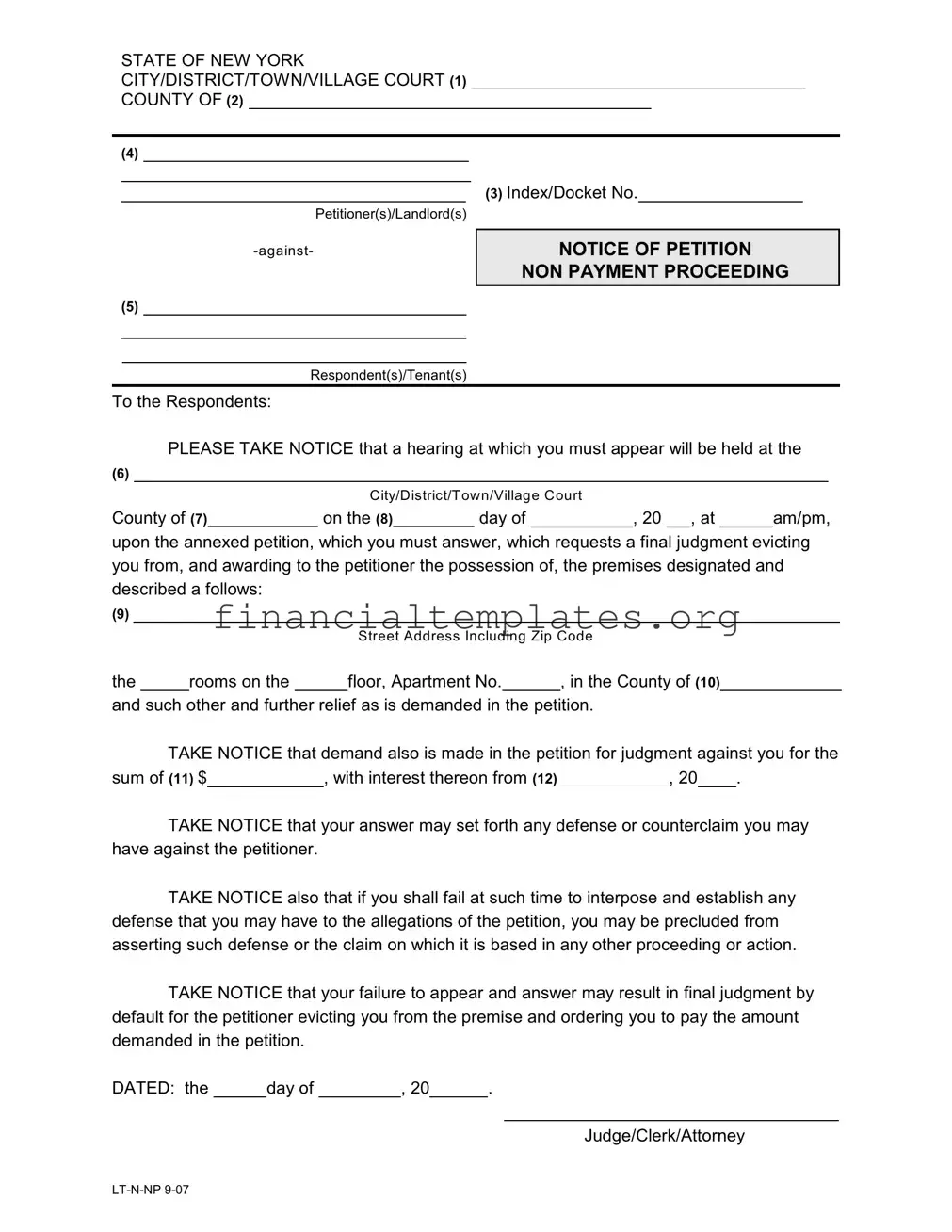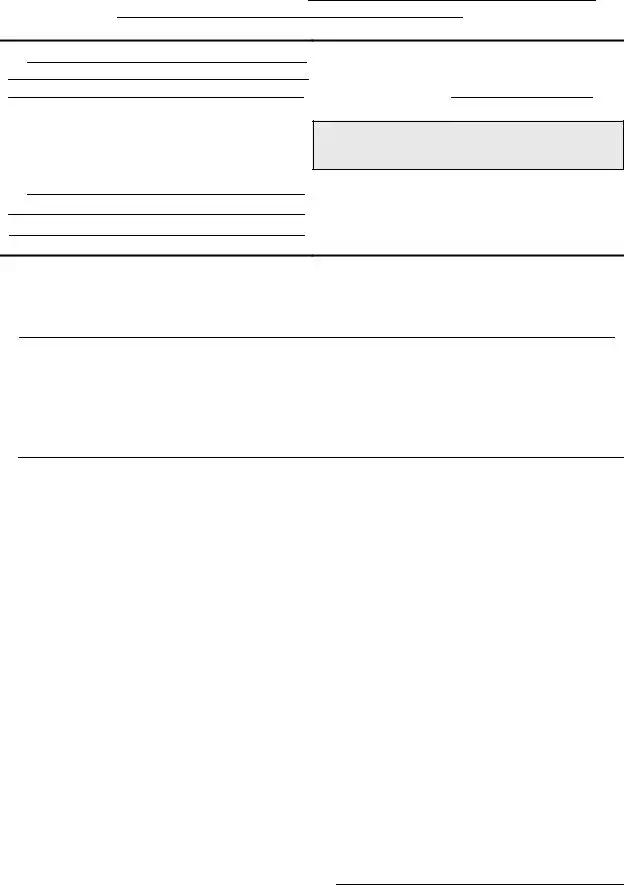The Eviction Notice shares a fundamental resemblance with the Notice Petition Non-Payment form as it serves as an initial step by a landlord to reclaim possession from a tenant. While the Notice Petition Non-Payment form specifically addresses non-payment of rent as the grounds for eviction, an eviction notice can cover various reasons including lease violations beyond just non-payment. The critical similarity lies in their primary function to alert tenants about the landlord's intent to seek legal redress to repossess the property if the situation isn't rectified within a specified timeframe.
Another similar document is the Summons in an Eviction Case. This document formally starts the court process of eviction, notifying the tenant that a legal action has been filed and specifying the court and hearing details, much like the Notice Petition Non-Payment form does. Both documents are instrumental in providing tenants with the details of the legal actions initiated against them, ensuring they have adequate information about when and where to appear for their hearing.
The Rent Demand Letter also parallels the Notice Petition Non-Payment form, albeit at a slightly earlier stage in the eviction process. This letter is a formal request by the landlord for overdue rent, essentially warning the tenant of potential legal action if the payment is not made. The main similarities lie in their mutual objective to resolve the rent arrears issue, though the Notice Petition goes further by initiating legal proceedings.
A Lease Violation Notice is akin to the Notice Petition Non-Payment form in that it alerts tenants of a breach of their rental agreement. However, it's broader since it can cover infractions beyond non-payment, including unauthorized pets or unpermitted guests. Both documents are critical in the escalation pathway towards eviction if the tenant fails to remedy the cited violation.
The Complaint for Unlawful Detainer is another document closely related to the Notice Petition Non-Payment form. It is filed by landlords to officially start the eviction process in court for reasons that can include non-payment of rent. Both documents serve as formal notifications that the landlord is pursuing legal avenues to regain property possession but the Unlawful Detainer specifically initiates the lawsuit.
Similarly, the Notice to Quit precedes actual eviction proceedings, demanding that a tenant leave the premises by a specific date due to reasons like non-payment or violation of lease terms. Like the Notice Petition Non-Payment form, it signals the landlord's intention to evict if the issue isn't corrected, providing a crucial step in the legal process for evictions.
The Notice to Cure or Quit is issued when a tenant violates lease terms, offering them an opportunity to rectify the issue or vacate. It parallels the Notice Petition Non-Payment form in its role as a precursor to more severe legal action, emphasizing rectification of lease violations including but not limited to non-payment of rent.
Notice of Rent Increase might seem less similar at first glance but relates to the Notice Petition Non-Payment form in the context of financial obligations under a lease. While the Notice of Rent Increase informs tenants about an upcoming rent hike, failure to comply with the new terms could lead to a Notice Petition Non-Payment if the increased rent is not paid.
The Security Deposit Demand Letter, sent by tenants to landlords to request the return of their security deposit, indirectly relates to the eviction process. Non-payment issues, leading to the use of the Notice Petition Non-Payment form, can sometimes stem from disputes over security deposits. This letter emphasizes the financial aspects of landlord-tenant relationships, like the Notice Petition focuses on resolving financial non-compliance.
Last, the Payment Plan Agreement can arise as a solution to the issues underpinning the Notice Petition Non-Payment form. By establishing a structured plan for overdue rent payment, it seeks to prevent eviction, showing a cooperative effort between landlord and tenant to address non-payment. Both documents focus on the resolution of rental payment issues, albeit from different approaches.

